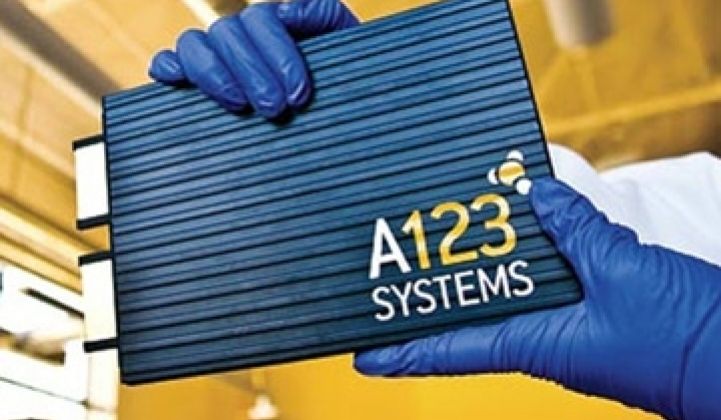So A123 Systems went public last week. Which green technology startup is going to be next?
"There are a half-dozen companies that I think will meet those criteria that I think could go public in the next 12 months," said Stephan Dolezalek, Managing Director at VantagePoint Venture Partners at the Renewable Energy Finance Forum-WEST in San Francisco. "But I don't see this as a window opening that will allow 30 to 40 companies to go through."
Dolezalek didn't say which startups he saw as IPO-ready. But speaking after his presentation, he did pass on some names he said he's heard others mention.
Those include smart grid networking providers Silver Spring Networks and Trilliant, electric carmaker Telsa Motors, solar-thermal power plant developer BrightSource Energy and LED maker Bridgelux, he said. (VantagePoint, is an investor in Bridgelux, BrightSource and Tesla.)
But don't get too excited, said venture capitalists speaking at the event. There are a handful of greentech companies with similar success potential to A123, they said.
That potential includes established revenues, a good backlog of contracts to fuel future growth, corporate partners and, in this economic climate, government support in the form of a big loan or grant from the Department of Energy (see Feds Give $2.4B to 48 Auto Battery and Electric Drive Projects).
But the public markets are still reeling from the credit meltdown and global recession that began last year. Given the shaky state of the markets, the risks of an unsuccessful greentech IPO spooking potential investors in other companies is a real concern, they said.
"The coast is not clear," said Neil Auerbach, managing partner with Hudson Clean Energy Partners. "Short sellers are waiting... to see these companies fail. We have to pray for their success."
A123 is doing pretty well so far. It saw a 50 percent increase in its share price on the first day of trading, from $13.50 to more than $20 (see A123 Closes Above $20: 50% Jump on IPO).
That's held up so far this week – A123 shares stood at $21.32 at the end of the day Wednesday. It's the biggest greentech IPOs since First Solar went public in 2006.
Silver Spring and Trilliant have contracts to network millions of smart meters and other smart grid devices. Silver Spring has said it expects to become profitable this year, and has hinted at an IPO in the next year or two (see Green Light post).
BrightSource has contracts to build 2.6 gigawatts of power plants for utilities Pacific Gas & Electric and Southern California Edison, and recently landed an undisclosed investment and engineering and construction partnership with engineering giant Bechtel (see BrightSource Gets Big Brother in Bechtel).
Bridgelux has been shipping light-emitting diodes for commercial , and earlier this year said that advances in cutting the costs of its LEDs could bring the energy-sipping lights within the reach of consumers (see New LED Aims to Whack Prices of Solid State Lighting).
Tesla has said it could reach profitability this year, and has landed $465 in DOE loans to help it build a powertrain factory and a factory for its upcoming Model S sedan (see Tesla Gets $465M Federal Loans for Model S, Powertrain Production).
Of course, federal stimulus funding typically requires that the recipient provide a matching amount – and going public is one way to get that match in place. That might put high-end hybrid carmaker Fisker Automotive on a list of companies looking to public markets (see Fisker Gets $528.7M From Feds for Two Plug-In Hybrids).
If a company can't go public, it can seek an exit in being bought, of course. But Pascal Levensohn, founder of Levensohn Venture Partners, said that's an inferior choice, not just for companies concerned but the economy at large.
"When companies are acquired instead of going public, jobs are lost, not created," he maintained. Corporate synergies equal layoffs, he said. But the percentage of IPO's versus acquisitions as exits for U.S. startups has been shrinking, he said – while more than half of startups went public in the 1990s, only 13 percent did so this decade, he said.
And the longer timelines for companies to go public – up to an average of 10 years as of 2008, compared to about four years back in 1998 – make it harder for venture capitalists to earn a return on their investments, he said.
That means that VCs may well have to put themselves in the place of public markets to bring companies past the early technology-proving stages they're used to funding, Dolezalek said.
"We have to get these companies further towards maturity," he said. Of course, that means that traditionally rich venture capital returns for earlier investments at better valuations may be diluted by the lower valuations that come with later-stage investments, he noted.



